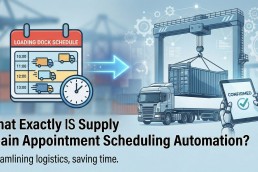What types of AI Automation tools are freight brokerages using?

To truly optimize a freight brokerage operation, it’s essential to look at the entire end-to-end experience, from the initial pricing of a load all the way through to billing and payments. Within this comprehensive process, numerous opportunities exist to leverage automation and technology to improve efficiency, reduce manual work, and enhance overall performance.
Typically it begins with pricing, an area that has already seen considerable investment in technology, algorithms, and specialized tools. However, as the load moves forward, opportunities continue to arise. Load tendering, for instance, still utilizes technologies like EDI, but more advanced and optimal solutions now exist on the market ( ex: Rectangle ). The process of building loads is largely described as “data entry” and “mundane work” that doesn’t require human decision-making, and can therefore be automated.
Following the load tender, appointment scheduling is the next critical step. This stage is highlighted as having “a lot of double entry across systems” and represents a significant area of opportunity for automation. Automating the process of determining ideal appointments, submitting requests, processing responses and confirmations, and handling exceptions, can streamline this complex phase.
Once an appointment is successfully booked, the focus shifts to allocating the load, either assigning it to a company driver or finding an external carrier. This process also offers optimization potential. Technology can help narrow down the options to find the most likely carrier or driver who fits the load requirements, aiming to minimize the time it takes to convert or secure the capacity. Tools exist to assist brokers with aspects of this allocation process.
Further downstream, payments involve ensuring all required documentation is collected, sent out promptly, and accessorial charges are correctly followed up on. These tasks also contain elements ripe for automation.
Looking across all these touchpoints – pricing, tendering, scheduling, allocation, payments – a recurring theme is the prevalence of so much double entry in data and the significant time spent actually looking for information. This inefficiency stems from fragmented processes, where necessary information exists but is scattered across different systems or workflows. Bringing this information together and automating the steps would provide a lot of value to an operations team.
Given the depth of the nuances in logistics’ workflows, addressing these specific automation opportunities often requires very specialized providers. These companies go really deep in providing value to brokers and carriers in a way that automation generalists couldn’t support from a technology perspective. This underscores that effective automation in freight brokerage requires targeted solutions designed for the unique complexities of each stage in the lifecycle.


